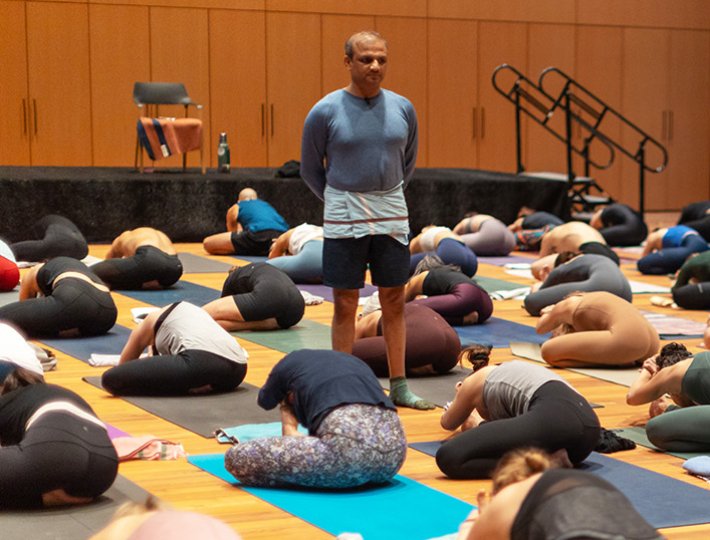When you work out regularly, you notice the benefit of rest days for allowing your body’s natural recovery processes—such as muscle repair, inflammation reduction, and hormonal rebalancing—to occur. After one or two recovery days, you feel rested, stronger and motivated for the workouts to come.
Neglect to rest and you risk burning out, or worse, “overtraining.”
But did you know that your body and mind can suffer overtraining-like effects as a result of overworking too? It’s true. According to an NPR study, 83 percent of Americans are presently stressed by their jobs, many of whom may be unaware of the extreme toll that stress is taking on their health.
Fatigue, body aches, lack of focus and irritability are some of the signs you’re not coping well with stress. Pushing through these symptoms isn’t getting you ahead; in fact, you’re risking serious long-term health consequences that will cost you—and your employer—dearly in terms of sick days and declining efficacy.
The good news is that you can excel at work while becoming more resilient to stress. The solution lies in managing your workday like a workout comprised of active periods and rest periods.
In athletics, this type of workout is called interval training. It allows you to build fitness and maintain a high quality effort over longer periods, such as completing your first marathon.
While running non-stop for 26.2 miles can seem intimidating, breaking the distance into 12-minute intervals—running 10 minutes and walking briskly for 2 minutes—feels far easier. It may also get you to the finish line sooner than attempting to run the entire way, starting off really fast and slowing as the race goes on.
So how do you apply the interval technique to your work day? Pair periods of productive work coupled with short breaks. Now, before you say, “sure that sounds nice, but I don’t have time”, stop, take a breath, and consider this: A study conducted by Gloria Mark, Ph.D., a professor in the Department of Informatics University of California, Irvine, found that the longer you work, the greater proportion of your time is wasted on things that aren’t creating any real value (a.k.a. distractions).
Related: The Real Reason Sustaining Your Meditation Practice Is So Hard
Fighting off distractions and staying focused takes energy, and that energy wanes as the day goes on. Add in the toll your work-related stress takes on your body and mind, and the idea that you’re getting ahead by chaining yourself to a desk for nine hours straight is absurd. Instead, organize your day in such a way that supports sustainable focus and mental output.
Step 1. Make Time for R&R
Look at the total time you spend working each day and set aside at least five to 10 minutes of each hour for rest and renewal, even blocking this time off your calendar is necessary. This is akin to the walking break at the end of an exercise interval. This way, you don’t wait for fatigue to dictate when you take a break; rather, you’re preemptively resting in order to sustain your energy.
Step 2. Set an Intention
Sitting at your desk first thing Monday morning and looking over a massive list of tasks and deadlines can be paralyzing. Where do you begin? Start with setting an intention says Jeremy Hunter, Ph.D., founding director of the Executive Mind Leadership Institute. “Clarifying intentions brings greater direction to investing energy,” he wrote in the journal, People + Strategy.
Ask yourself which project or person would benefit most from your attention and immediate action. Focusing your morning energy on what’s most pressing helps you get ahead before your energy wanes later in the day.
Step 3. Get Focused
It’s hard to maintain steady focus and attention on a singular task for long, particularly when devices, notifications and colleagues constantly interrupt. Schedule productivity blocks to last at most 50 to 55 minutes. This is your exercise interval.
Use this time to complete one task or a batch of similar tasks. (Switching rapidly between different types of tasks is more mentally draining.) Set a timer to notify you when your work interval ends.
Step 4. Rest, Recover and Repeat
During your rest intervals, the aim is to mentally and physically shift “gears” from doing mode to resting mode, a state that researchers at Maastricht University in the Netherlands call “internal recovery.”
In their 2014 research paper, the Dutch researchers explain internal recovery as “periods of relaxation that take place within the frames of the workday or the work setting in the form of short scheduled or unscheduled breaks.” The key to ensuring that these breaks are helpful, say the researchers, is to change your environment or body posture to help disengage from the mental effort your work requires.
For example, stand if you’ve been sitting, stretch and move your body and engage a different part of your brain in either a relaxing activity, casual conversation, or nothing at all.
Organizing your work energy around intervals of productivity and recovery helps you not only “pace” yourself but also helps preserve your sense of control over your personal well-being in a hectic work environment.









Comments (0)